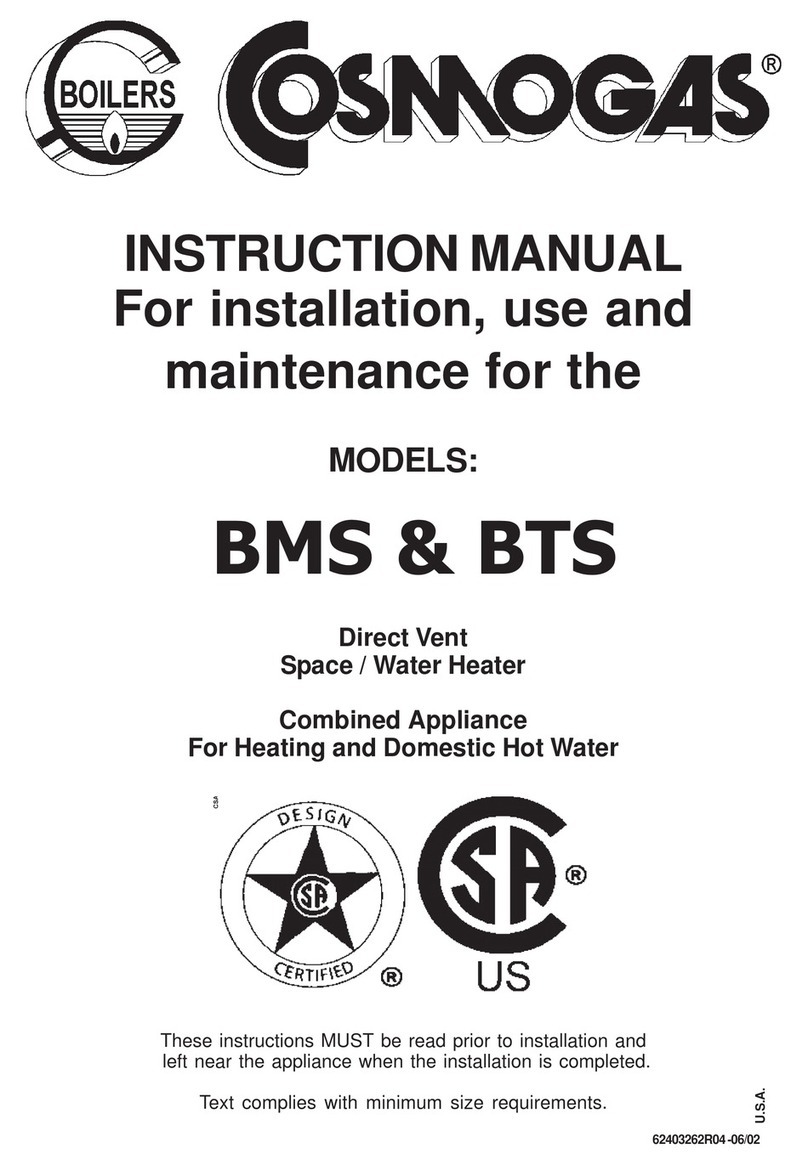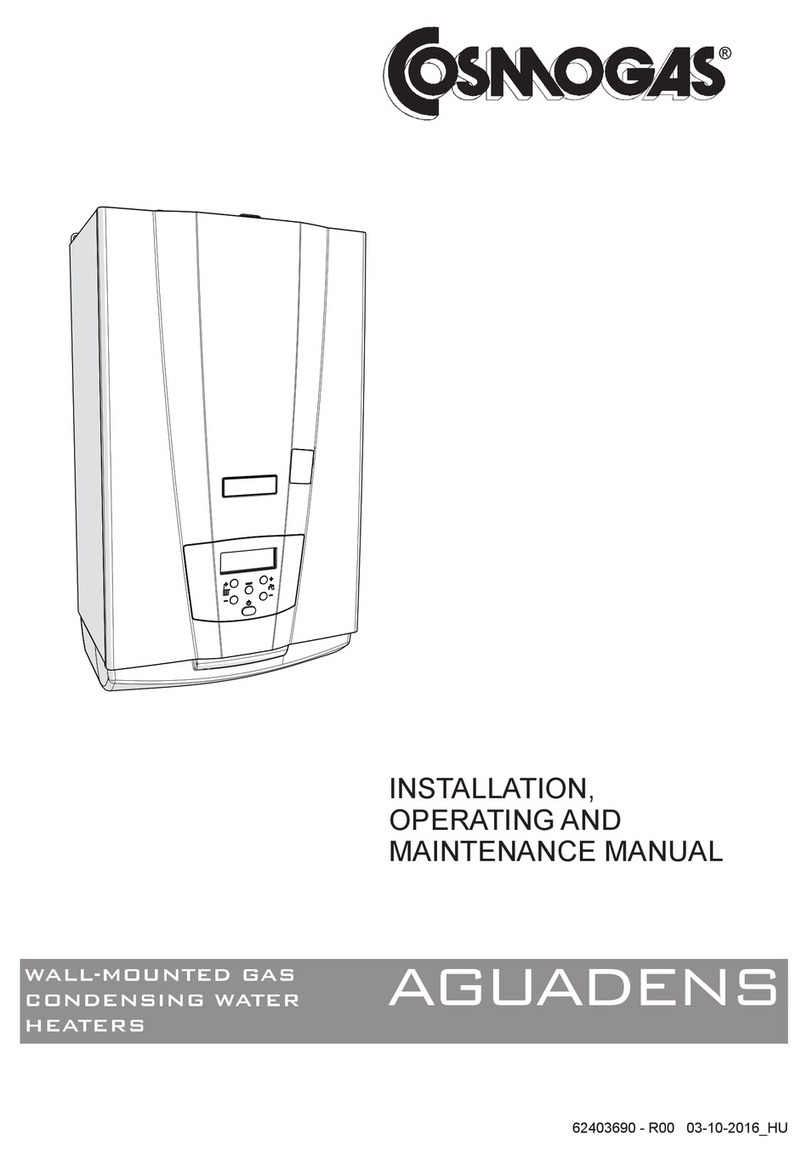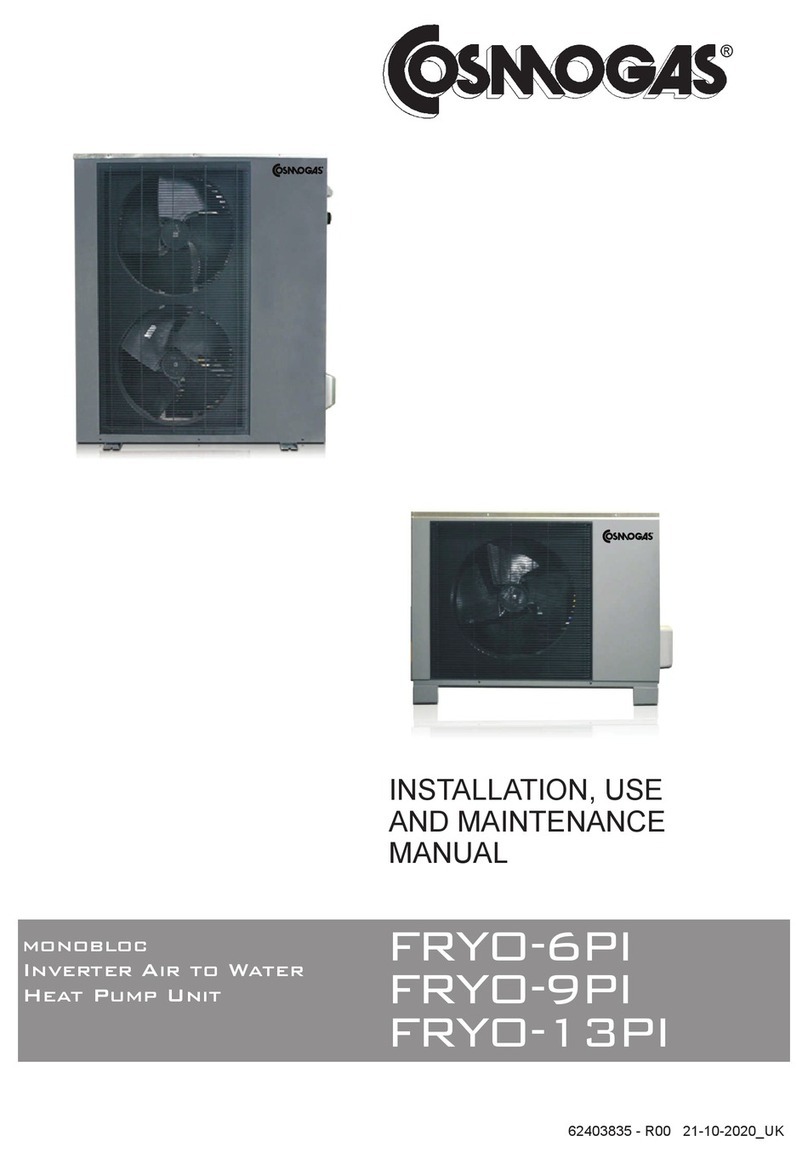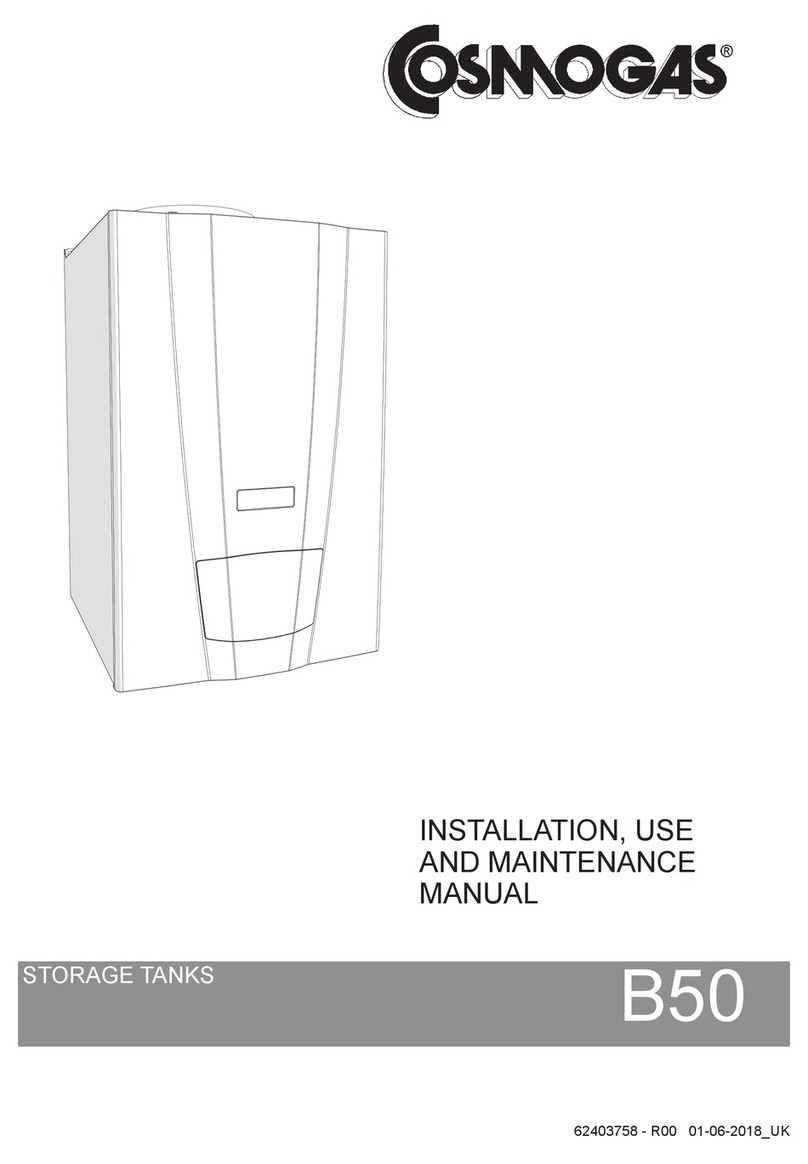10
A INSTALLATI N INSTRUCTI NS
1 perating and adjusting the
output to the radiation system
The COSMOGAS heater can be installed in any
domestic or light commercial building where
the maximum BTU/H required is not greater
than 84,000 BTU/H.
The unit has a internal mi ing valve (heating side
only) that can be adjusted to regulate the supply
water temperature delivered to the heating system.
The heating system will not receive any water
unless the water temperature inside of the heater
is at a minimum of 140°F. The heater built-in
domestic hot water priority thermostat will cease
the power to the circulator until the temperature is
greater than 140°F.
2 Location
This space/water heater unit is not intended for
outdoor installation. Choose a location centralized
to the piping system along with consideration to
the vent pipe length. Additionally, you will need to
place the space/water heater so that the controls,
drain, inlet/outlet, and gas valve are easily
accessed. Also, care must be e ercised when
choosing the location of this appliance, where
leakage from the safety relief valves, leakage from
related piping, or connections, will not result in
damage to the surrounding areas, or to the lower
floor of the building.
No valve is to be placed between the safety relief
valves and the heater. The discharge from the
temperature and pressure relief valve must be
conducted to a suitable place for disposal. No
reducing coupling or other restriction shall be
installed in the discharge line. The discharge line
should allow complete drainage of both valve and
line.
3 Installation
The installation must conform to local codes and
ordinances or, in the absence of local codes, the
National Fuel Gas Code ANSI Z 223.1/NFPA 54 -
1984. When installed the appliance must be
electrically grounded in accordance with the
National Electrical Code, ANSI/NFPA No.70 -
1987.
For Canada, the installation should conform to CGA
B149.1 INSTALLATI N C DES and/or local
installation codes.
The gas supply piping system should be tested
before the heater is connected.
The heater, (complete with all its parts: e ternal
jacket, intake and discharge flue pipes, etc.), must
be installed leaving a distance of at least 10 cm,
(4), from sidewalls and ceiling.
Installation of the BTS combi directly on
combustible flooring such as carpeting shall be
installed on a metal or wood panel e tending behind
the full width and depth of the appliance by at least
3, (76.2 mm), in any direction or, if the appliance
is installed in an alcove or closet, the entire floor
shall be covered by the panel.
3.1 Installation Template
ONLY model BMS is provided with an installation
Figure 5 - Installation template, nly
for model BMS
Figure 5


































